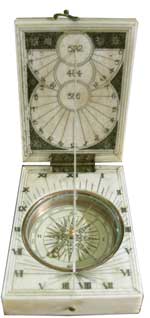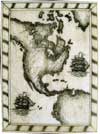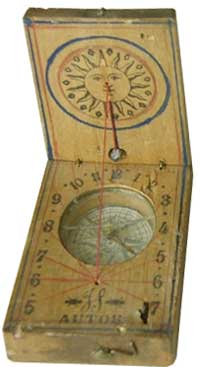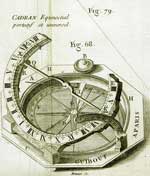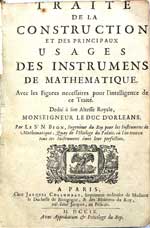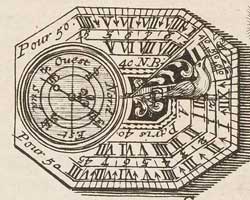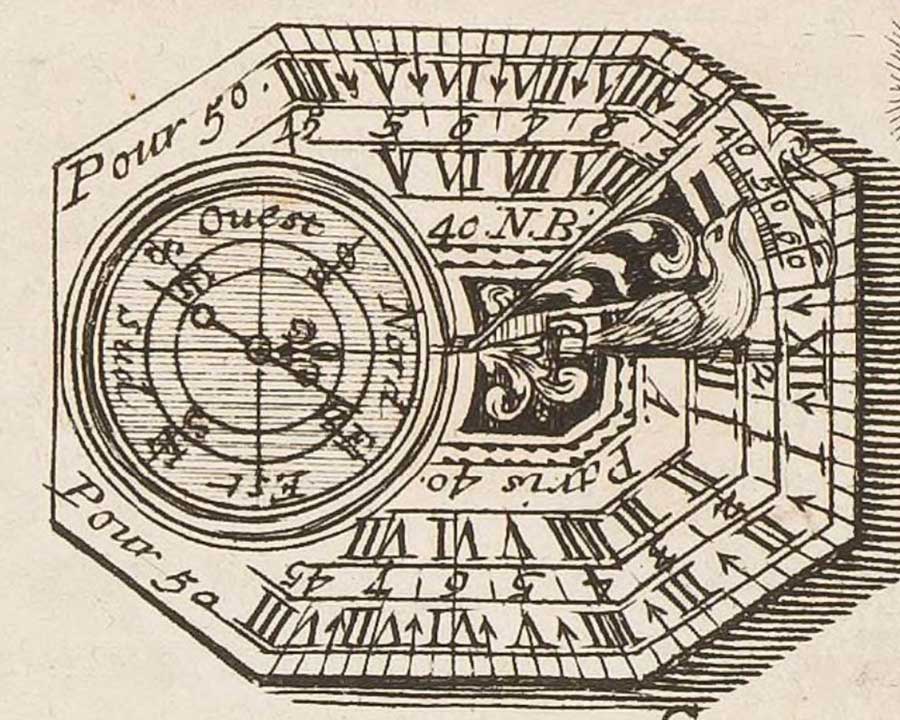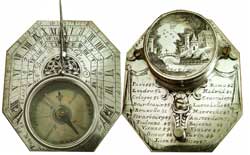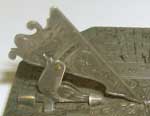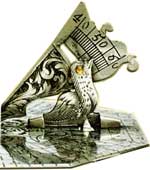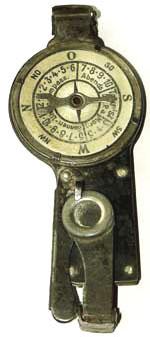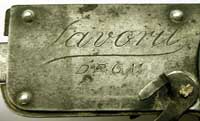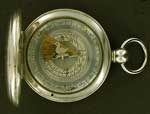EUROPEAN SUNDIALS
FRENCH SUNDIAL
These two-fold ivory sundials are called in French Dieppe-style because they were originally developed and mass produced by Charles BLOUD in the northern French city of DIEPPE (Normandy) from 1666 on. His brothers (or sons?) Gabriel and Jacques continued the trade and were first imitated by Ephraïm Sénécal, then by Jacques Sénécal (see center photo).Some items feature many functions: Italian and Babylonian hours (see Definitions below), seasons curves and a latitudes table.
They have on top of the lid a universal dial and a polar dial. We find inside these sundials a vertical and a horizontal dial. Under the compass is also an analemmatical dial. This device is governed by a rotating disk with a perpetual calendar.
Definitions:
There has been several methods for counting the duration of a day:
- judaic or antic hours: 12 hours from sunrise to sunset and 12 hours from sunset to sunrise. They were only twice in the course of the year of equal length, on March 22 and September 22 (equinox)
- italic hours: 24 hours of equal length from sunrise until the next sunrise
- babylonic hours: 24 hours of equal length from sunset until the next sunset
- astronomical hours: 24 hours of equal length counted from noon until noon on the next day.
TOP OF PAGE
PORTUGUESE SUNDIAL
Wood, ink, paint (XIXth c.), signed I.S. i.e. Iohannes (Latin for Joao) da Silva.The daylight hours are indicated for Portugal's mean latitude (38-39 deg.)
TOP OF PAGE
BRITISH SUNDIAL
Paper on wood, England, early 19th c.On the back is a list of towns in Europe and North America with the corresponding latitudes.
Examples: Naples 41, Glasgow 56.
Note: This exhibit doesn't belong to the Online Compass Museum. These pictures were sent by a visitor.
 |  | 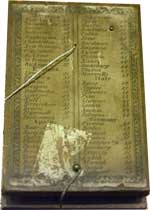 |
TOP OF PAGE
GERMAN SUNDIAL
Paper on wood, Germany, early 19th c.On the back is a list of towns in Europe with the corresponding latitudes.
Note: This exhibit doesn't belong to the Online Compass Museum. These pictures were sent by a visitor.
 |  |  |
TOP OF PAGE
CHINESE SUNDIALS
- 1 - |  | 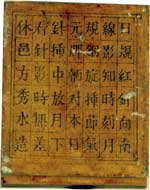 |
- 2 -
 | 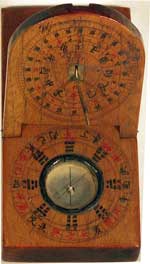 |  |
TOP OF PAGE
EQUINOCTIAL COMPASSES
DESCRIPTION : The stylus must be parallel to the Earth rotation's axis and is thus pointed to the North Star. The ring on which its shadow is projected must be parallel to the Earth equatorial plane and can thus be adjusted according to the latitude of the user. To be precise, the system must be oriented to the geographical North and thus take into account the magnetic deviation. Furthermore, it must be placed horizontally. This is made possible by one or two levels and adjusting screws.Note: These exhibits don't belong to the Online Compass Museum. These pictures were sent by visitors (priv. coll.).
Some examples:
 |  Instrument with two levels made by F. BARKER (1919) |
 Instrument with one level mde by SECRETAN (ca. 1930) |  Instrument built by TOPOCHAIX (2nd half of the 20th c.) |
TOP OF PAGE
BION
PROFILE - Nicolas BION (1652-1735) was a French mathematician. His shop was located in Paris, Quai de l'Horloge du Palais.He wrote a famous book on mathematical instruments called Traité de la construction et des principaux usages des instruments de mathématique and built Butterfield-type compasses.
TOP OF PAGE
BUTTERFIELD
PROFILE - Michael Butterfield (1635-1724) was a british clockmaker who settled in Paris about the year 1685. He worked for the royal court of France and was apppointed engineer to the King. He opened in the district faubourg Saint-Germain, in the street rue Neuve-des-Fossés, a shop for precision instruments. His shop's sign read 'AUX ARMES D'ANGLETERRE' (The English coat of arms). Russia's Czar Peter the Great visited his shop and ordered a great quantity of dials made of gilt copper. After his death in 1724, the sun-watch type he had been manufacturing and selling was copied by many european manufacturers. Picture exerpted out LES MONTRES SOLAIRES (1932). (Click for enlarged view) | 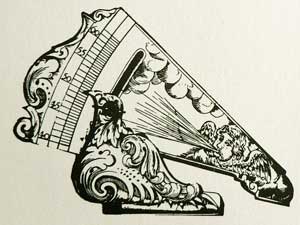 A typical bird-shaped gnomon with latitude scale. |
Principle and description: This sundial type is adjustable for latitude by increasing or decreasing the angle of the gnomon against the bird's beak and then reading from one of the appropriate dials for the different latitudes. It consists of an elongated octagonal plate on which a shadow is cast through an adjustable quadrant engraved on one side of a folding hinged gnomon supported by a bird-shaped fitting. The dial chapter includes several (3-4) sets of engraved scales alternating in Roman and Arabic numeral made for different latitudes.
The instrument incorporates a recessed compass with a fine blued steel magnetic needle and the dial takes into account the present position of true (magnetic) North.
Pictures below: Late 17th, early 18 Century silver horizontal "Butterfield Sundial"
TOP OF PAGE
FLOATING CARD SUNDIALS (Pantochronometers)
PROFILE - ... (C. R.) was a French sundial maker ... ? | 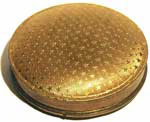 |  | Technical Data - Diameter: 55 mm - Depth (with lid): 20 mm - Weight: 34 gr - Material: Gilt light alloy France, late 19th c. (Click on the pictures for enlarged views) |
GNOMON POCKET COMPASSES
Portrait : ... (C. R.) was a French sundial maker ... ? |  | Technical Data - Diameter: 55 mm - Depth (without lid, gnomon erected): 22 mm - Weight: 35 gr - Material: brass case, paper dial France, late 19th c. (Click on the pictures for enlarged views) |
L'ABÉE-LUND'S WATCH KOMPASS
PROFILE - Johan Henrik L'Abée-Lund was a Norwegian engineer. He manufactured this compass from approx 1922 to the late 30's.The name Uhr-Kompass means "watch compass", and was meant quite literally: It could be used as a sundial, with the use of the table on the backside. The red little ant was a part of a promotion gimmick. In these days every product should have a marketing slogan, and for this compass it was "Mauren i syd" or "The ant to the south", referring to the well known fact that in the woods you can find approximately South by looking at what side of the trees the ants build their hill."
(Quoted after Kornelia's website http://www.purgatory.net/kornelia/compass/compass.htm)
 (Click on the pictures for enlarged views) |  |  Technical Data Technical Data- Diameter: 50 mm - Depth: 12 mm - Weight: 65 gr Right: the red ant logo |
FOLDING SUNDIAL WITH BINOCULAR
COMBINED INSTRUMENT: SUNDIAL & BINOCULAR
Origin: Germany (ca. 1930-1940), model FAVORIT / D.R.G.M. (reg. trade mark).Folding binocular with sundial. A device resembling a bottle opener serves to lock in folded position the small spring loaded lenses.
User's instructions for the sundial-compass: The dial shows the hours of the longest possible summer day in Northern Germany (i.e from 3 in the morning to 10 in the evening) together with the cardinal points. To orientate the compass, one has to turn the arrow so that the current hour (indicated by a watch) appears in the arrow's fork end. One turns then the compass with the arrow head pointing towards the sun. Example: at noon, the sun is in the South.
Like on all other opera glasses (shown in the category OTHER COMPASSES), there is a mirror on the face opposite to the dial.
TOP OF PAGE
Pocket Hunter Sundials
Hunter-type compass with foldable Bion-type gnomon. It appears in a 1932 catalogue of the French company S-L (see category Pocket Compasses) but was manufactured by Collignon-Houlliot. | 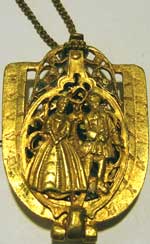 | Replica of an antique instrument Technical data - Dimensions: 50 x 38 x 13 mm - Weight: 35 gr (Click on the pictures for enlarged views) |




